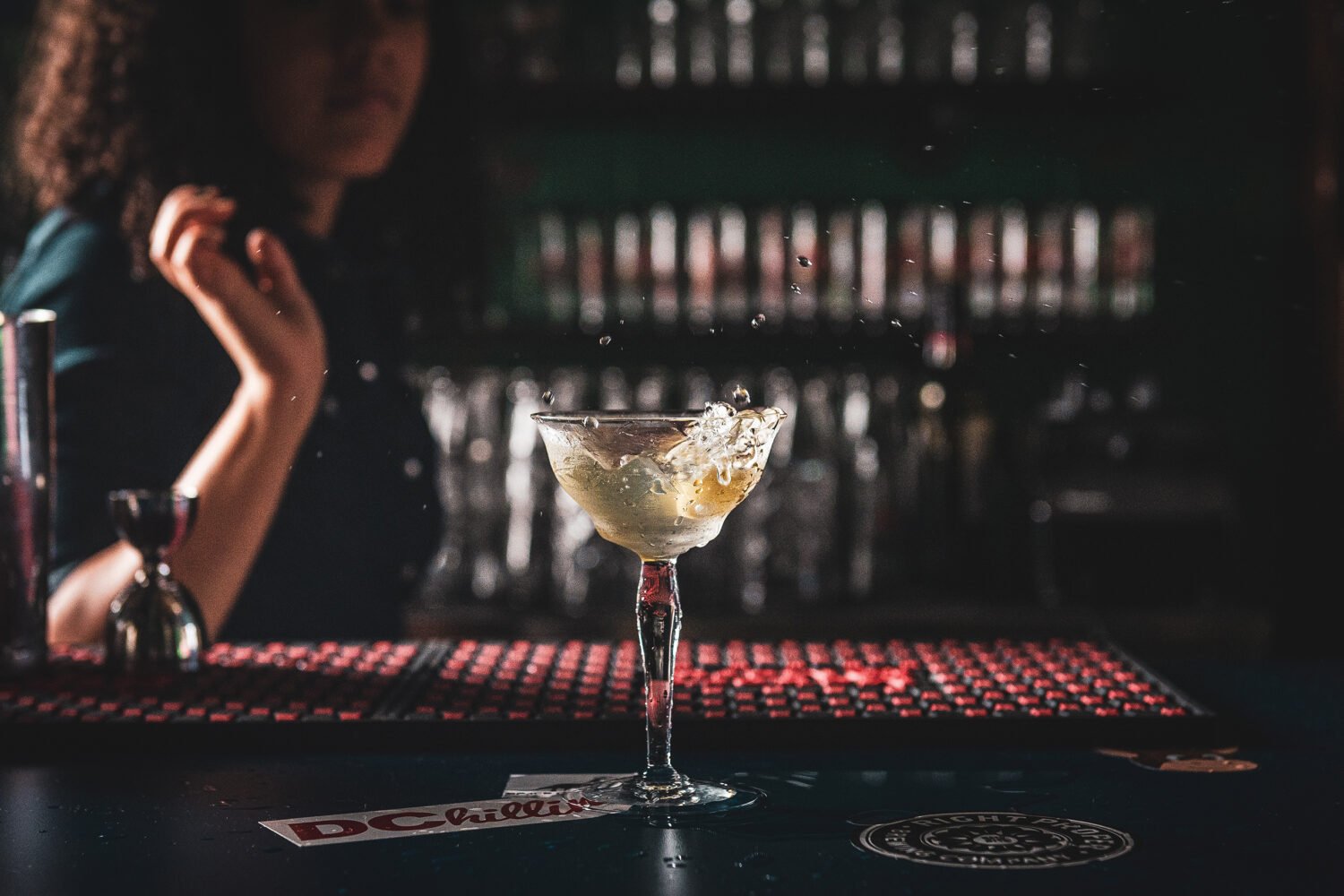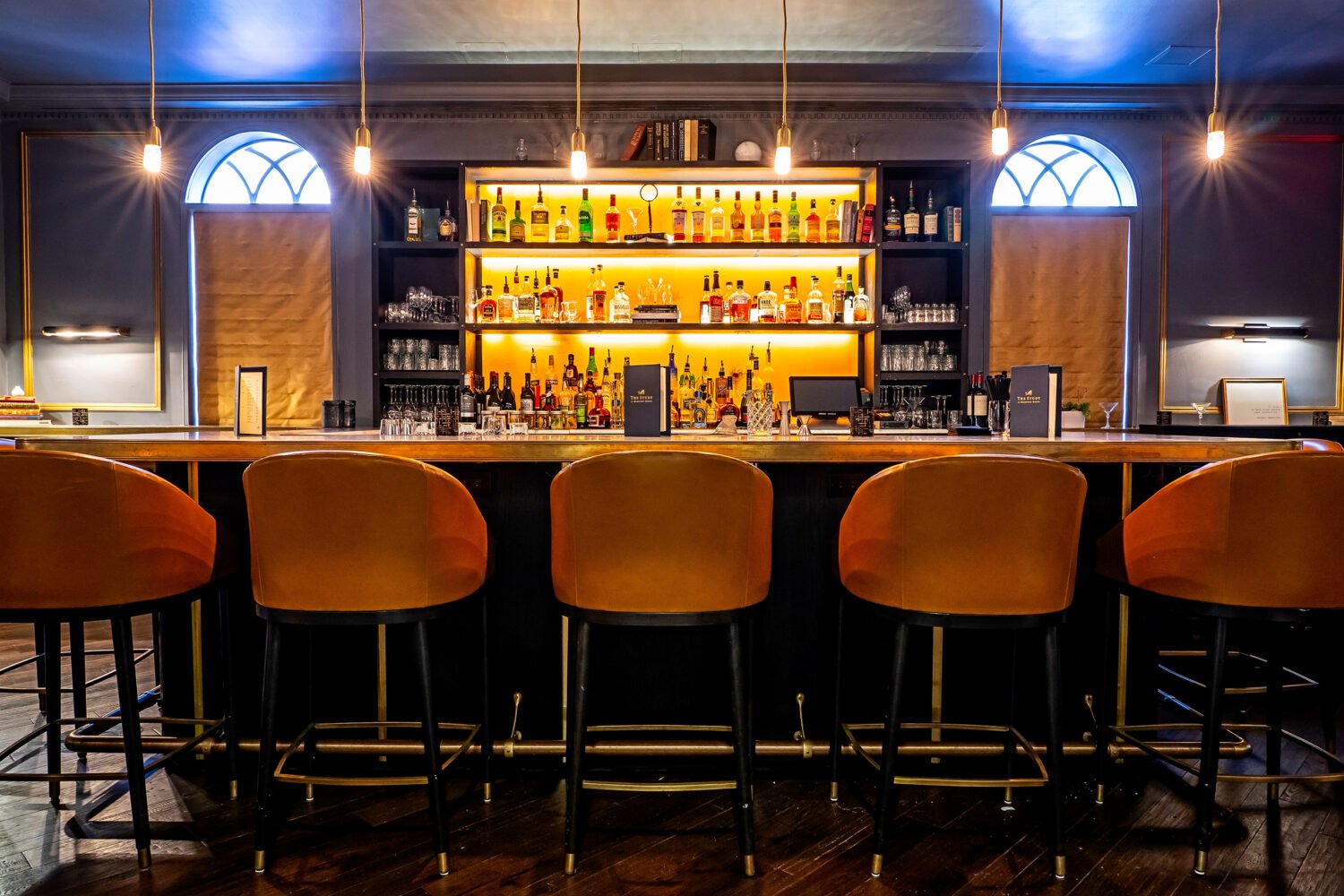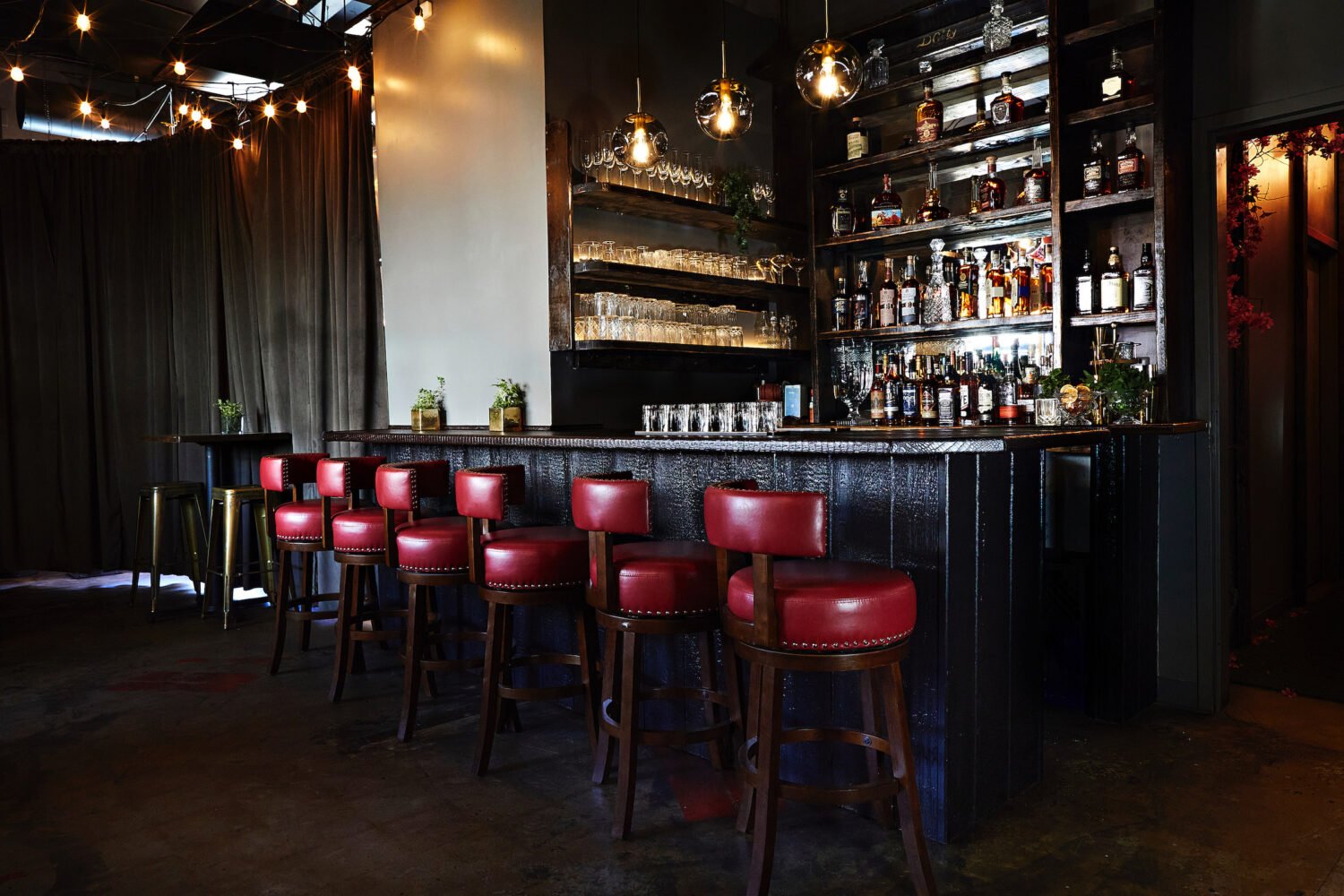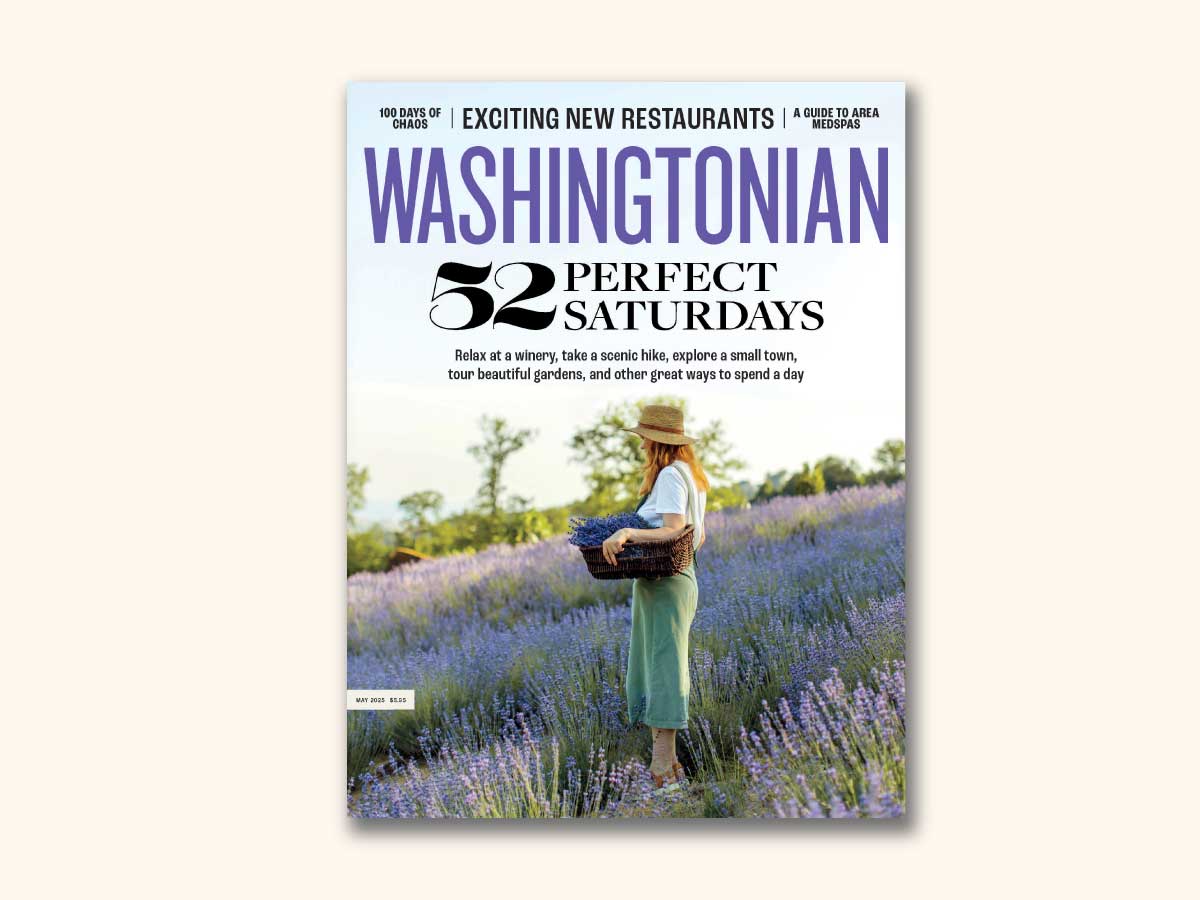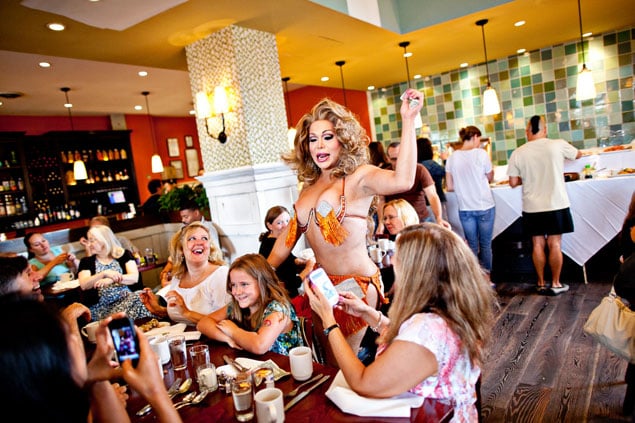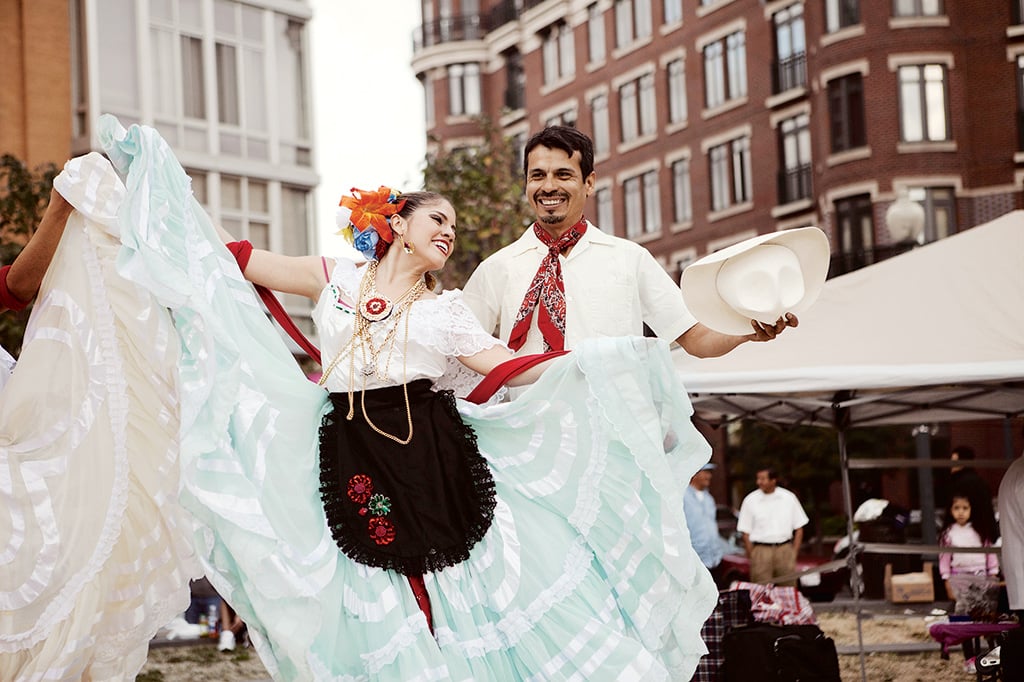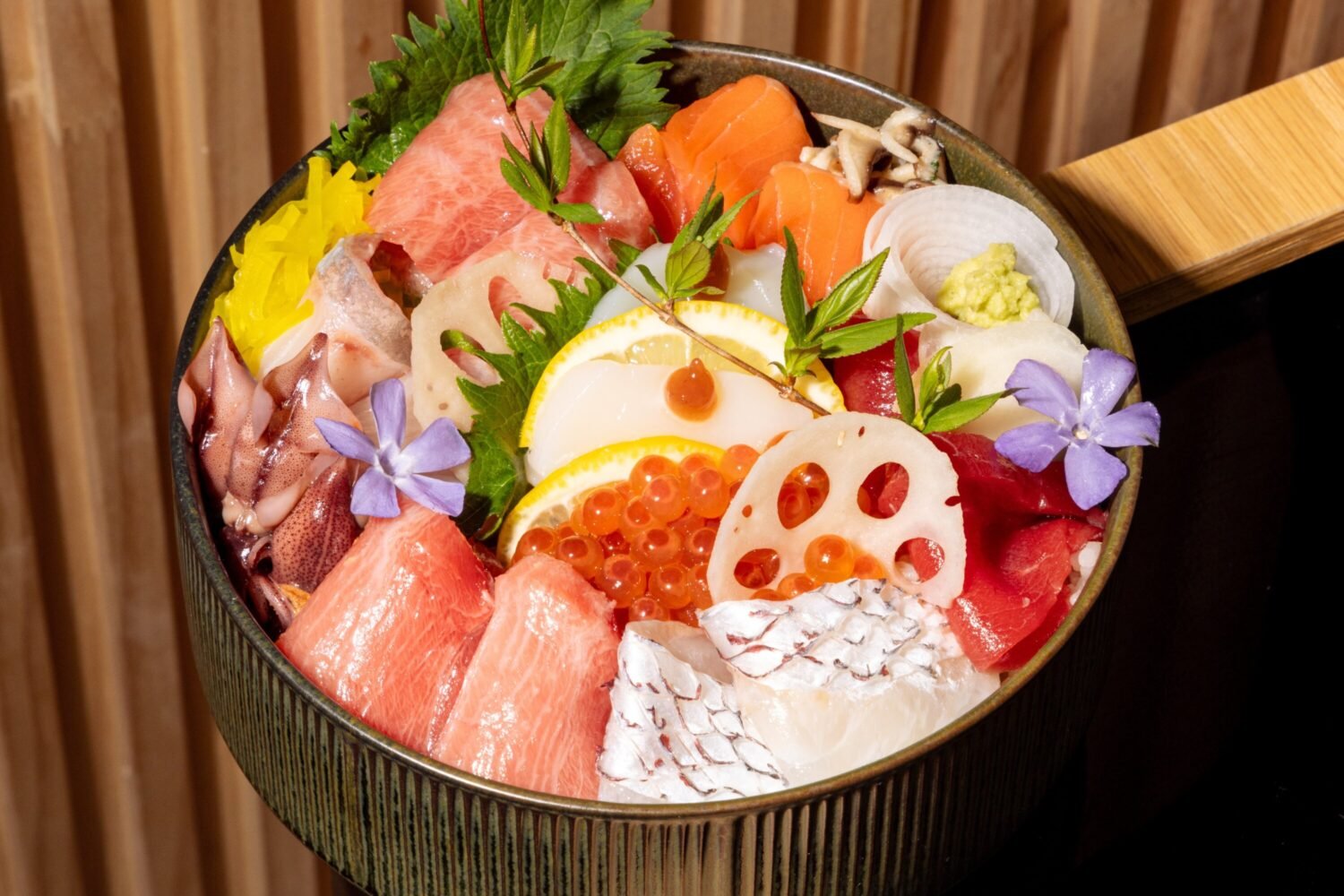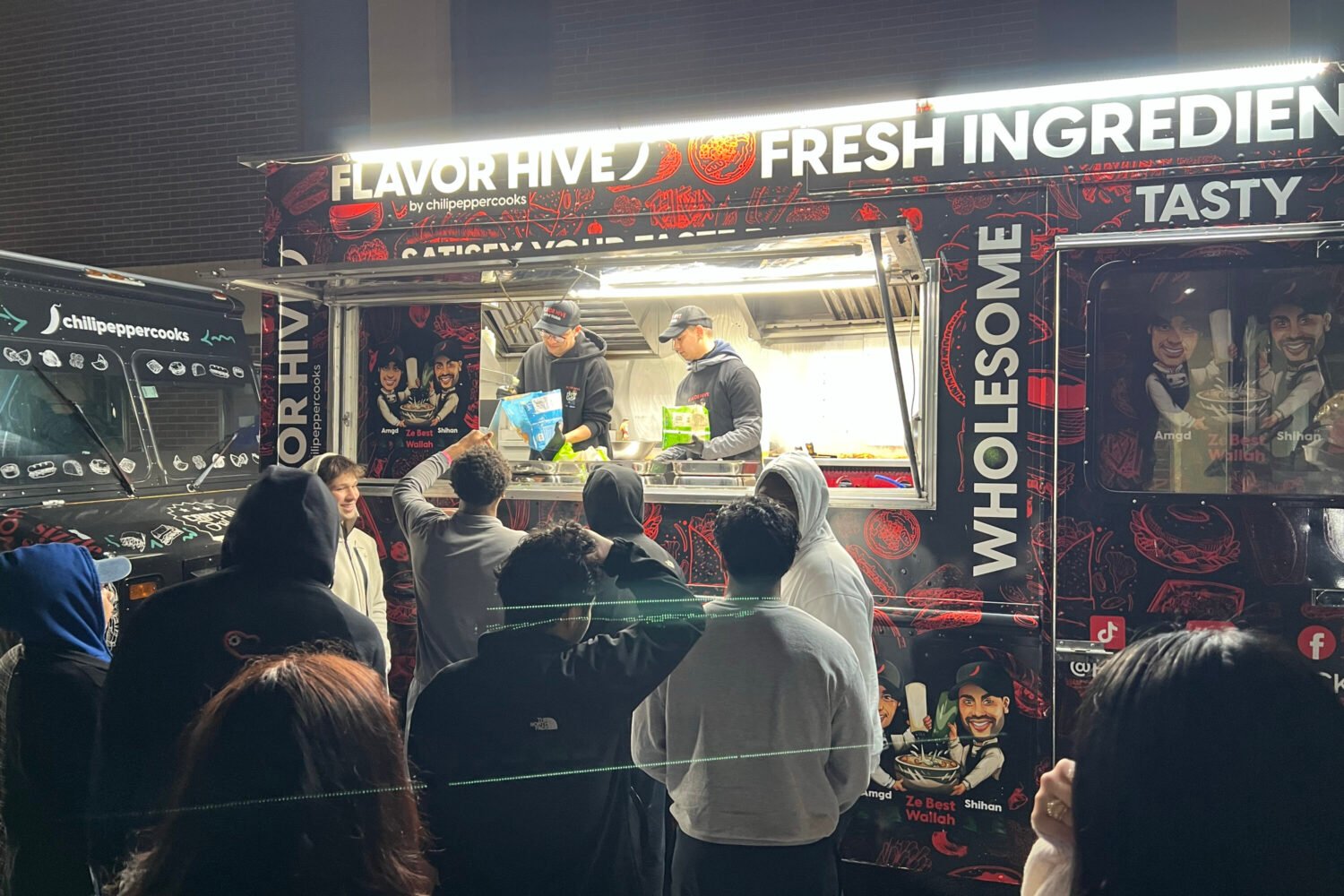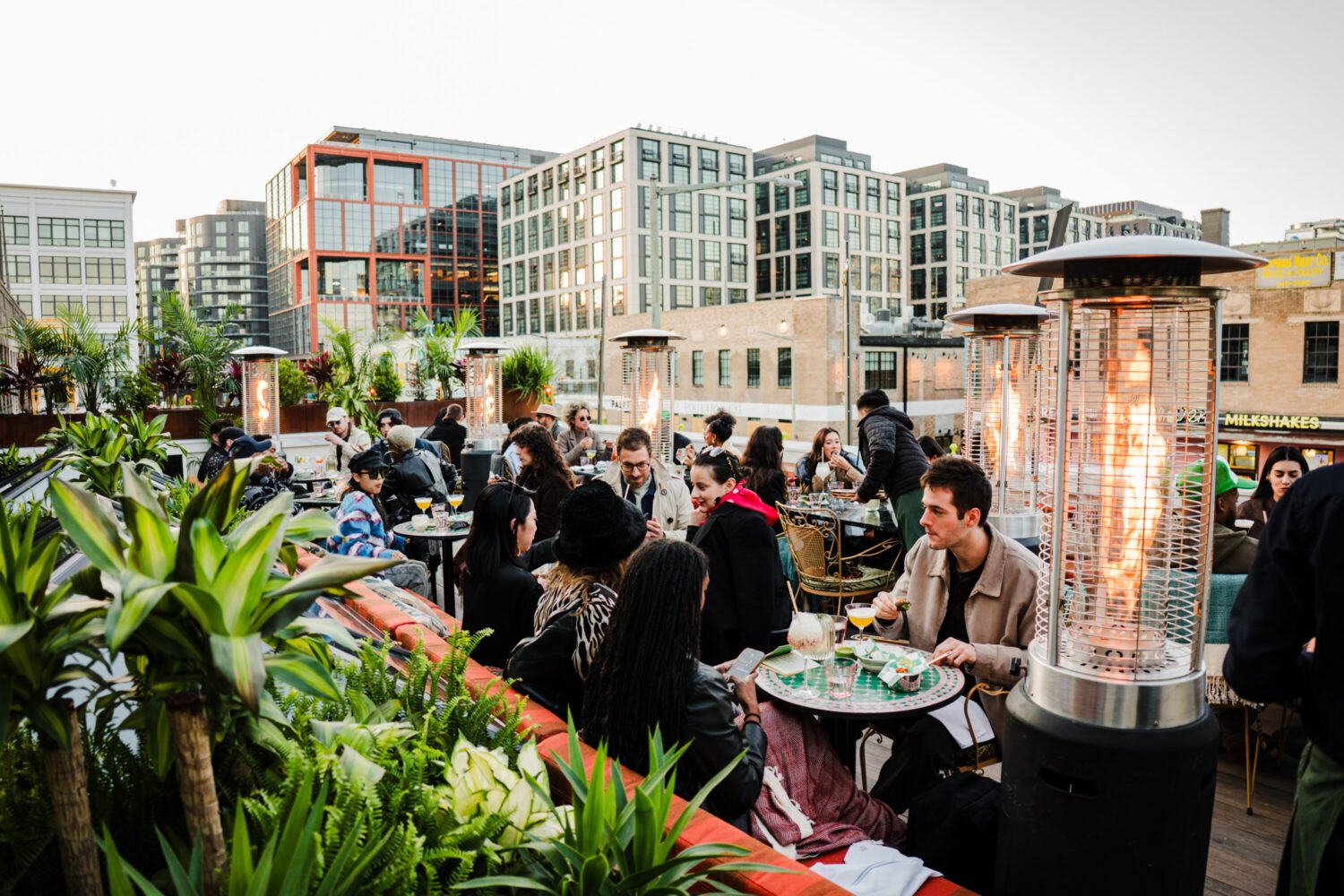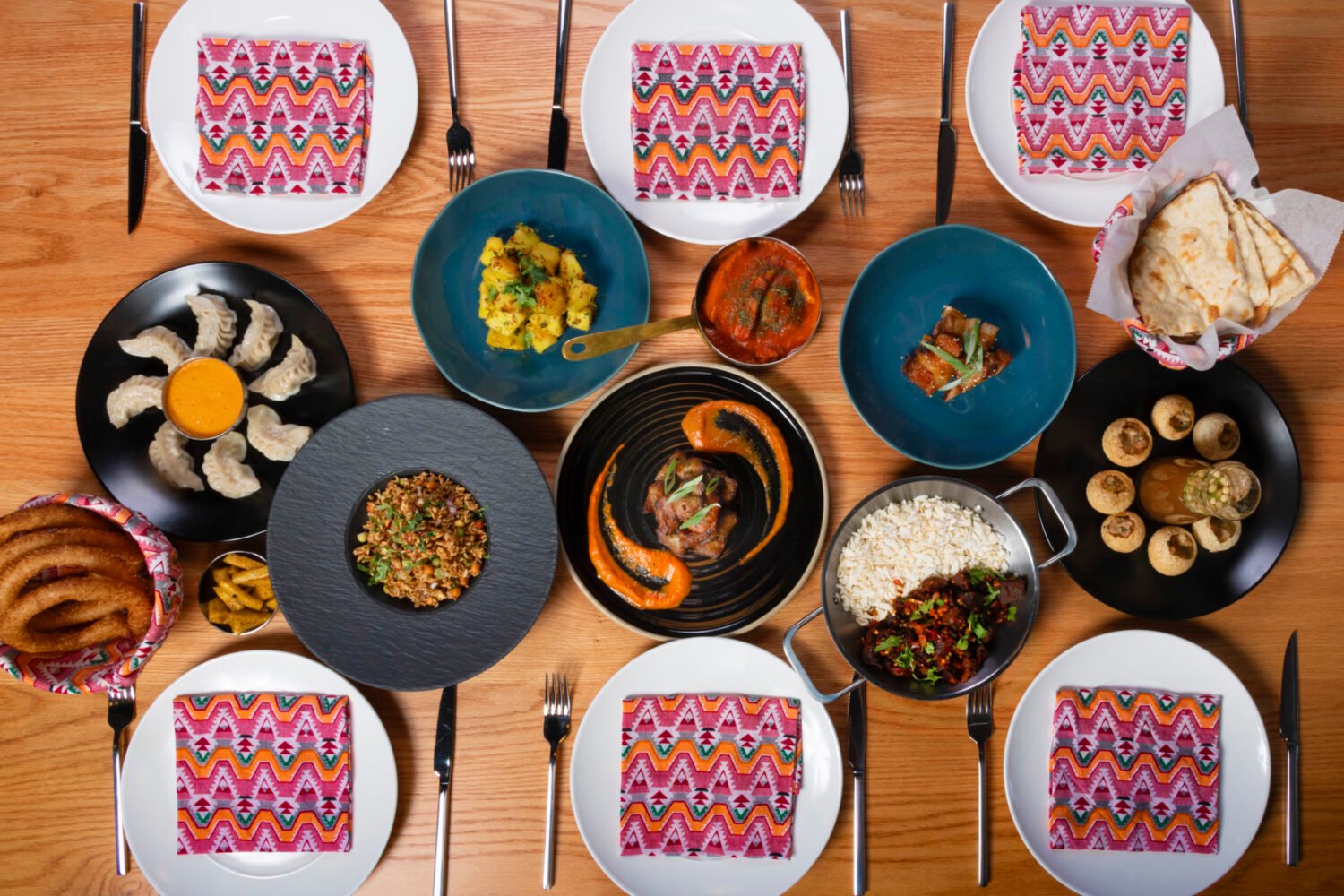
Some restaurants have regulars. Nava Thai Noodle and Grill has obsessives.
I count myself among them, although every time I go—and I’m up to seven visits now—I’m reminded of what true fandom really looks like.
Once it was a woman from Alexandria who said that every week she drives 45 minutes to Wheaton with her family to get her fix of pad Thai, a reminder of the flavors she grew up with in Bangkok. When I said I had yet to order the dish, I might as well have told her I hadn’t paid my income taxes. “Oh, you must,” she said with great seriousness. “You must.”
At one lunch, I struck up a conversation with a woman who was luxuriating over a plate of Panang curry. She said she stopped by five or six times a week, and not because she needed a taste of home—she’s from Latin America. “I don’t know,” she said, shrugging as she struggled to explain the attraction, “but nobody does it like they do.”
And these stories pale beside that of the customer who returned from a two-month trip to Thailand and pronounced herself homesick. For America? No—for Nava.
How does such a simple, unassuming restaurant—one that devalues atmosphere, service, and elaborate plating—inspire such devotion?
Tucked into the back of an Asian grocery store on a side street in Wheaton, Nava is barely visible from the street. As a friend said, climbing an outside staircase and stepping through the dim vestibule, “If you didn’t know it was here, you’d never go.”
There’s only one waitress. The dining room is smaller than most fast-food joints, although the two-tone olive paint job, lacquered tables, and sepia prints give the space the feel of a jewel box.
When you walk in and find a table, you feel you’ve interrupted a private moment among the other diners, that you’ve stumbled upon a discovery they’d meant to keep to themselves.
Not that the restaurant yields its secrets easily. It wasn’t until halfway through my second meal, after the spring rolls and the larb gai and the red and green curries—fine renditions all, if not memorable—that I realized I’d been going at it wrong, that to seek out the usual assortment of dishes I always order at Thai restaurants was somehow to miss the meaning of Nava.
It began with the hot-and-sour squid. Because of its intricate crosshatchings, which put me in mind of an Escher print, the squid—in many restaurants the texture of rubber bands—was soft, pliant, almost succulent. It had been doused with a chili-lime sauce containing bits of celery, red onion, and cilantro—a sauce so good that it was worthy of bottling.
Next came the pad Thai my fellow traveler had insisted I order. I’d grown accustomed to pad Thai that tasted like a wan approximation of spaghetti and meatballs. This one was richly embroidered: the dark charring of the noodles, the pungency and mystery of the seasonings, the hail of crushed peanuts—I couldn’t stop eating it.
But it was with the Floating Market Noodle Soup that all the puzzle pieces fell into place. There’s nothing remotely like it on area menus—a big, steaming bowl of broth the color of a dark gumbo that manages to be rich and beefy and sweet and spicy and aromatic and sour all at once. A tangle of thin noodles sits at the bottom, nearly obscured by the slices of pork, beef or pork balls, bean sprouts, and watercress that float above it. Salted pork rinds bob on the surface, functioning as a Thai version of Croutons. It finally dawned on me that what I was eating wasn’t restaurant food exactly, though it was being served in a sit-down setting. This was food-stall food—the quick-cook, rib-sticking, grab-and-go dishes of the small markets that line Thailand’s teeming city streets and fill its slow-moving, food-rich barges.
Buoyed by my discovery, I overrode the wishes of my tablemates, who were beginning to beg off, and asked for a menu. Why hadn’t I noticed the grilled chicken and sticky rice before? A staple of food stalls, the half chicken—reminiscent of the great rotisserie shops in Nava’s Wheaton neighborhood—was flanked by a side of unsweetened sticky rice and a complex tamarind dipping sauce. A dish called Crispy Mussels hadn’t sounded inspiring before; now that it had been recontextualized, I leapt at the chance to order it. What emerged from the kitchen was a quick-fry frittata, its big, sweet mussels bound by egg, its edges lightly dark and crunchy. Its red chili sauce was an electric accent.
So much Thai food is sweet in a way that tends to blanket the flavors in a dish, the hits of salty-fishy, sour, and funky that Thai cooking needs. At Nava, sweetness is subordinated to sour and hot, to funk and salty-fishy.
I would have thought that seven meals—and a dissection of leftovers at home—would have satisfied my curiosity about Nava. If anything, it intensified it. I admired the restaurant’s range and breadth, and I was taken with its uniqueness. But I wanted to understand why Nava’s cooking is so much bigger, bolder, and brighter than anywhere else. For that, I had to go into the kitchen.
The restaurant’s owners—and cooks—Suchart Srigatesook and his wife, Ladavan, don’t present themselves as trying to forge something new. They describe their ambition to open Nava with disarming humility. “We were frightened,” says Ladavan.
In leaving the security of the Wheaton restaurant Dusit Thai a little more than two years ago, they took as big a step as the one they’d taken three decades earlier when they emigrated from Thailand. Suchart had grown tired of cooking Thai food for American tastes, tired of the muted palette of flavors, the lack of heat. But was there an audience for street food? Were there enough people out there to appreciate the fiery, pungent cooking he envisioned?
The owners of Wheaton’s Hung Phat market reached out to the couple and urged them to set up shop in the back of the grocery. The Srigatesooks declined at first, then realized that the market could provide the herbs and spices, the noodles, the hard-to-find delicacies to produce the dishes they and other homesick Thais longed for.
That solved one problem. There were others. The biggest was that every dish would have to be made from scratch, in keeping with the fresh-comes-first ethos of the food stalls. That runs counter to the utilitarian approach of most Thai restaurants, where, say, a salad of shredded papaya seldom carries the tang it’s supposed to because it’s made in advance—the shreds losing their bite in the refrigerator, the flavors of lime, fish sauce, and chilies muddling and muting in the process. Curries at typical Thai restaurants are assembled from parts rather than constructed whole. The proteins are partly precooked, then combined with sauce at the last minute, so the flavors barely have a chance to get acquainted. Soups, prepared that morning or even earlier, are left to simmer in huge vats.
One recent afternoon, I stood in Nava’s galley-style kitchen and watched as the Srigatesooks handled the lunchtime rush. An order for papaya salad sent an assistant, Suwit Dungmoon—nicknamed Boy—to a large mortar and pestle, where he built the dish ingredient by ingredient, grinding fresh garlic, chilies, green beans, and baby tomatoes into a paste, dousing the mixture with fish sauce and a spoonful of sugar, and working it until it reached a chunky smoothness.
A waitress, Eid Piwkhow, popped into the kitchen and teased Dungmoon: “In Thailand, we say that a woman with a steady rhythm”—with the pestle—“is a good woman, a woman who would make a good wife.” She smiled. “Boy, he’s not a good wife.”
The Srigatesooks come from central Thailand, where the salad is made with more sugar, more lime, and crushed nuts, so just before tossing it with a handful of shredded papaya, Dungmoon added those ingredients. What for most restaurants is a toss-off took ten minutes here to produce from start to finish—as long as some entrées take at three-star restaurants.
Behind Dungmoon, Ladavan was at work on a Floating Market Noodle Soup. From one of two 20-gallon vats of broth—one pork, one beef—she ladled a liquid produced from slow-simmered pork bones and black soy sauce.
Into the soup pot went two dollops of an incendiary red chili sauce the Srigatesooks make from scratch each morning; it was followed by a palmful of crushed garlic, a shake of white vinegar, another of fish sauce, and a spoonful of sugar. While it boiled, Dungmoon prepared the bowl, centering a mound of watercress that he topped with fried garlic chips, a chewy condiment called sweet-and-salted radish, and salted pork rinds.
To the simmering pot, Ladavan added pork meatballs and—one of the restaurant’s secret ingredients—pig’s blood. “The blood gives it good body,” said Ladavan, garnishing the bowl with chopped celery leaf, cilantro, and green onion. It also gives it richness and an indefinable taste that stumped me the first time I dug in, forcing me to play guessing games all through the meal.
The waitress returned, calling out an order for pad Thai. Suchart Srigatesook leapt to action. Perhaps no dish captures the difference between Nava and other Thai restaurants quite like the pad Thai, and although Ladavan will make pad Thai, everyone at the restaurant knows the dish is Suchart’s.
The finished product—a thick twirl of dressed noodles with bean sprouts and a lime wedge—would appear to be a simple assemblage of ingredients, simply prepared, an impression reinforced by the directness of the flavor. I was astonished by the number of ingredients that Suchart worked with.
He topped a plate of reconstituted noodles with thin slices of smoked tofu (a dead ringer for bacon), ground peanuts, dried shrimp, paprika, sweet-and-salted radish, and fried onions. Then, pouring a little soybean oil into a hot wok, he tilted the contents of the plate onto the cooking surface. He gave it a quick, vigorous stir. A spoonful of chopped garlic and two large shrimp came next. Then he ladled a mixture of chicken broth and sugar water into the wok, adding spoonfuls of white vinegar, fish sauce, and a sauce made of tamarind and plum sugar. When the liquid came to a boil, he introduced a spoonful of sugar, then stepped away from the stove to let the water and sugar caramelize.
Clearly, this was part of the machismo of making pad Thai: the confidence to walk away at a crucial moment.
“You have to let it burn a little,” said Ladavan with a touch of envy. When she makes the dish, she said, she’s afraid to let it sit and burn and can’t resist giving it a toss. The result is good, but it’s lighter and less intense.
When the noodles took on the dark amber of a Sugar Daddy candy bar, Suchart returned to the stove, cracked an egg into the wok, tossed on some green onions, and commenced a final stir.
It was a good thing the dish wasn’t complete without the decoration of bean sprouts and a lime wedge. Lacking these garnishes, it appeared ruined—the noodles were so dark that they looked unappetizing, and the whole thing seemed to have congealed into a sticky mass.
Serving a dish like this—a dish that only those who have eaten it before or know what it’s supposed to be like would welcome—requires an enormous leap of faith on the part of the kitchen, the equivalent of a playwright trusting that his audience is going to savor the nuances and laugh in the right places. But that’s Nava. No Technicolor dining room, no eye-catching cocktails—none of the tricks that many Thai restaurants employ to lure an audience. Nava doesn’t announce itself or trumpet its importance. It asks us to find it. And then, once we’ve found it, it’s up to us to plumb its mysteries, solve its riddles, dish by dish. For some of us, that’s a seemingly unending process. But a happy one.
This review appeared in the July, 2008 issue of The Washingtonian.

